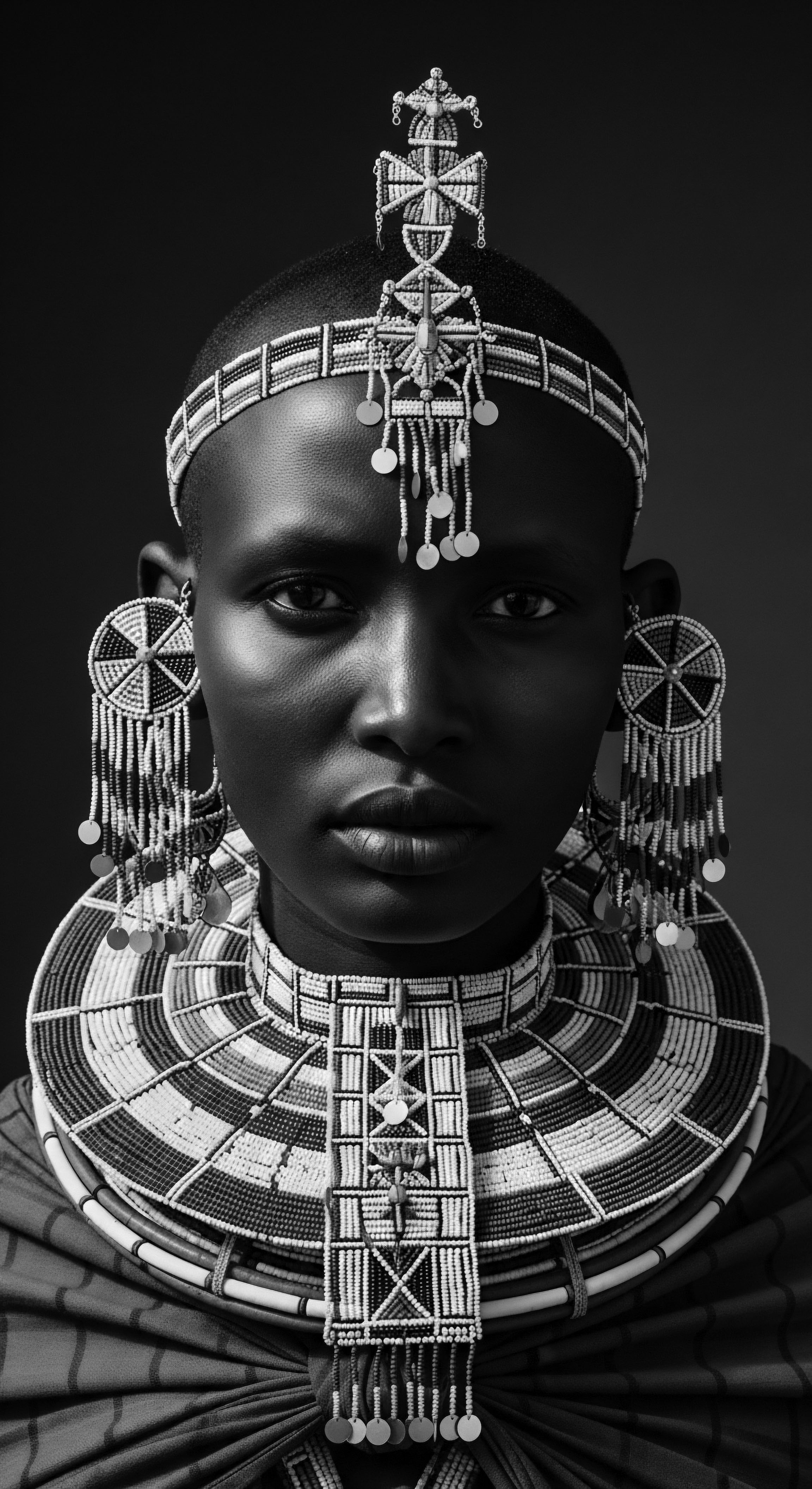
Roots
The journey of textured hair is not merely a biological fact; it is a living archive, etched into the very helix of cultural memory. For generations, the way we have cared for our coils, kinks, and waves has told stories of survival, artistry, and resilience. This profound connection is nowhere more visible than in the enduring practice of covering our crowns with headwraps. These seemingly simple pieces of cloth have served as silent guardians, their history interwoven with the physical protection of delicate strands and the deeper safeguarding of identity and heritage across continents and centuries.

Hair Anatomy and Ancestral Protection
Textured hair, with its unique elliptical follicle shape and varied curl patterns, possesses a distinct biology that inherently shapes its care. These curls, ranging from loose waves to tight coils, create natural points of vulnerability, where the cuticle layers lift, making the hair more prone to dryness and breakage. Unlike straighter hair types, the natural oils from the scalp struggle to travel down the curled shaft, often leaving the ends parched. This elemental reality of textured hair, understood not through modern microscopes but through generations of lived experience, necessitated methods of protection.
Headwraps, whether a simple cloth or an elaborately draped fabric, offered a practical shield against environmental aggressors. They kept the sun’s harsh rays from sapping moisture, guarded against abrasive winds, and created a barrier against dust and debris, all of which could weaken hair and lead to damage. The knowledge of these protective qualities passed down through families, becoming a cornerstone of hair wellness long before scientific terms existed for cuticle health or moisture retention.
The earliest iterations of head coverings in Africa served multiple functions beyond simple adornment. From ancient Egypt and Nubia to West Africa, head ties held symbolic significance, denoting status, marital state, or spiritual standing. Yet, they also provided pragmatic defense for hair.
Women in rural settings, for instance, used headwraps daily to keep hair clean from dust and dirt during chores. This dual purpose, combining aesthetic and utilitarian aspects, highlights how ancestral practices thoughtfully addressed both the social and biological needs of hair.

Classifying Coils, Kinks, and Waves
While modern systems classify textured hair into types like 3A, 4B, or 4C, the richness of textured hair types has always existed, recognized and celebrated within diverse African communities. Hair was not just a biological attribute; it was integral to identity, status, and societal roles. The various textures and patterns were part of a visual language, speaking to geographic origin, ethnic group, and social standing. Headwraps, in turn, were not a uniform covering but adapted to suit the particular hair types they protected and the cultural statements they made.
A headwrap could preserve the intricate braids of a Zulu woman or shield the tightly bound rows of a Kushite, ensuring their styles remained intact and their hair safeguarded. The way a headwrap was styled often communicated wealth, ethnicity, marital status, or emotional state.
| Traditional Name Doek |
| Region/Culture Southern Africa (Afrikaans influence) |
| Associated Hair Protection or Significance Used for daily chores to protect from dust; also worn during sleep to shield hair. |
| Traditional Name Gele |
| Region/Culture West Africa (Yoruba, Nigeria) |
| Associated Hair Protection or Significance Highly elaborate and often starched to hold shape; signifies class, marital status, and heritage. |
| Traditional Name Tukwi/Tuku |
| Region/Culture Botswana |
| Associated Hair Protection or Significance General term for head covering, reflecting local adaptations of doek. |
| Traditional Name Chitambala |
| Region/Culture Zambia |
| Associated Hair Protection or Significance A local adaptation of head covering, similar to doek. |
| Traditional Name Tichel |
| Region/Culture Traditional Jewish (diaspora) |
| Associated Hair Protection or Significance Hair covering for married women; practical for protecting hair and maintaining modesty. |
| Traditional Name These terms illustrate the diversity of headwraps across various cultures, each serving both protective and symbolic functions for hair and identity. |
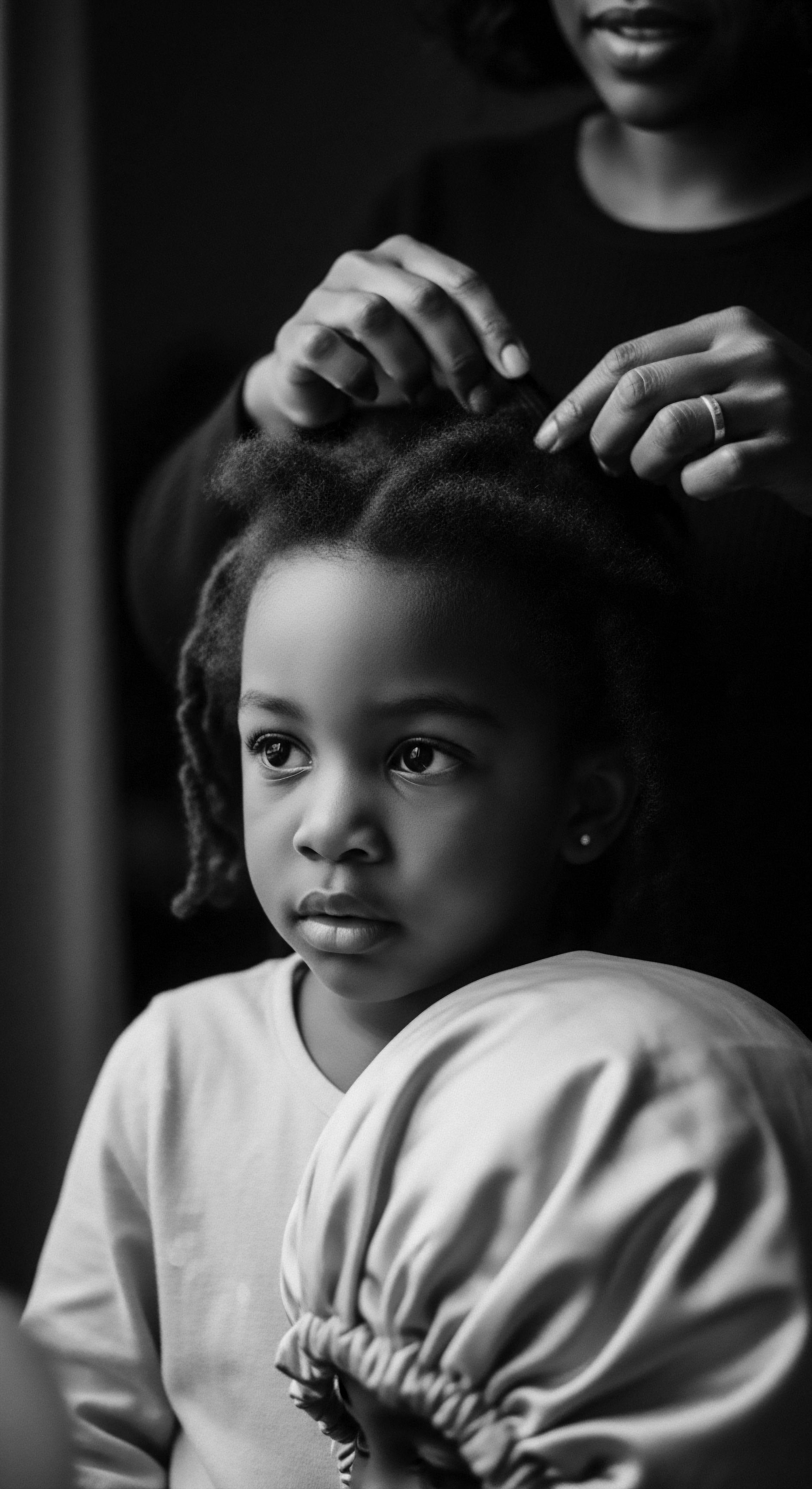
A Shared Lexicon of Hair Protection
The language surrounding textured hair care is as old as the practices themselves. Before terms like “leave-in conditioner” or “deep treatment” entered our vocabulary, communities possessed their own words for the rituals and coverings that preserved hair health. These ancestral lexicons spoke of oils from plants like shea butter or coconut oil, used to moisturize the scalp and strands.
Headwraps, known by names such as Doek in Southern Africa or Gele in West Africa, represented not only a practical tool for hair protection but also a potent symbol of dignity and resistance. They became a universal language of self-preservation and communal identity, allowing wearers to maintain their hair’s vitality amidst challenging environments or social pressures.
Headwraps have been a silent, steadfast companion to textured hair, offering protection and grounding identity for centuries.

Environmental Influences on Hair Cycles
Hair growth cycles are biological constants, yet their optimal health is profoundly impacted by environment. In diverse African climates, characterized by intense sun, arid winds, and dusty conditions, textured hair faced constant challenges. The natural vulnerability of coiled strands to dryness meant that exposure could lead to accelerated cuticle damage, hindering growth, and increasing breakage. Headwraps emerged as a direct response to these environmental factors.
By covering the hair, they minimized exposure to harsh elements, helping to retain moisture and keep strands shielded. This preventative approach, honed over generations, allowed hair to flourish even in demanding conditions. It was a testament to ancestral ingenuity, acknowledging the hair’s biological needs and providing solutions through readily available means. The protective function was particularly crucial for styles that took days to create, ensuring their longevity and maintaining the hair’s integrity.

Ritual
The story of textured hair is also a story of its styling, a continuous dialogue between tradition and adaptation. Headwraps have always stood as a quiet collaborator in this artistic expression, not just a covering, but an extension of the styling process itself. From holding intricate styles in place to offering respite between complex preparations, headwraps are an undeniable part of the heritage of hair adornment and preservation. They embody a silent rebellion against erasure, transforming moments of oppression into displays of self-determination, while also serving as a practical, everyday tool for hair maintenance.
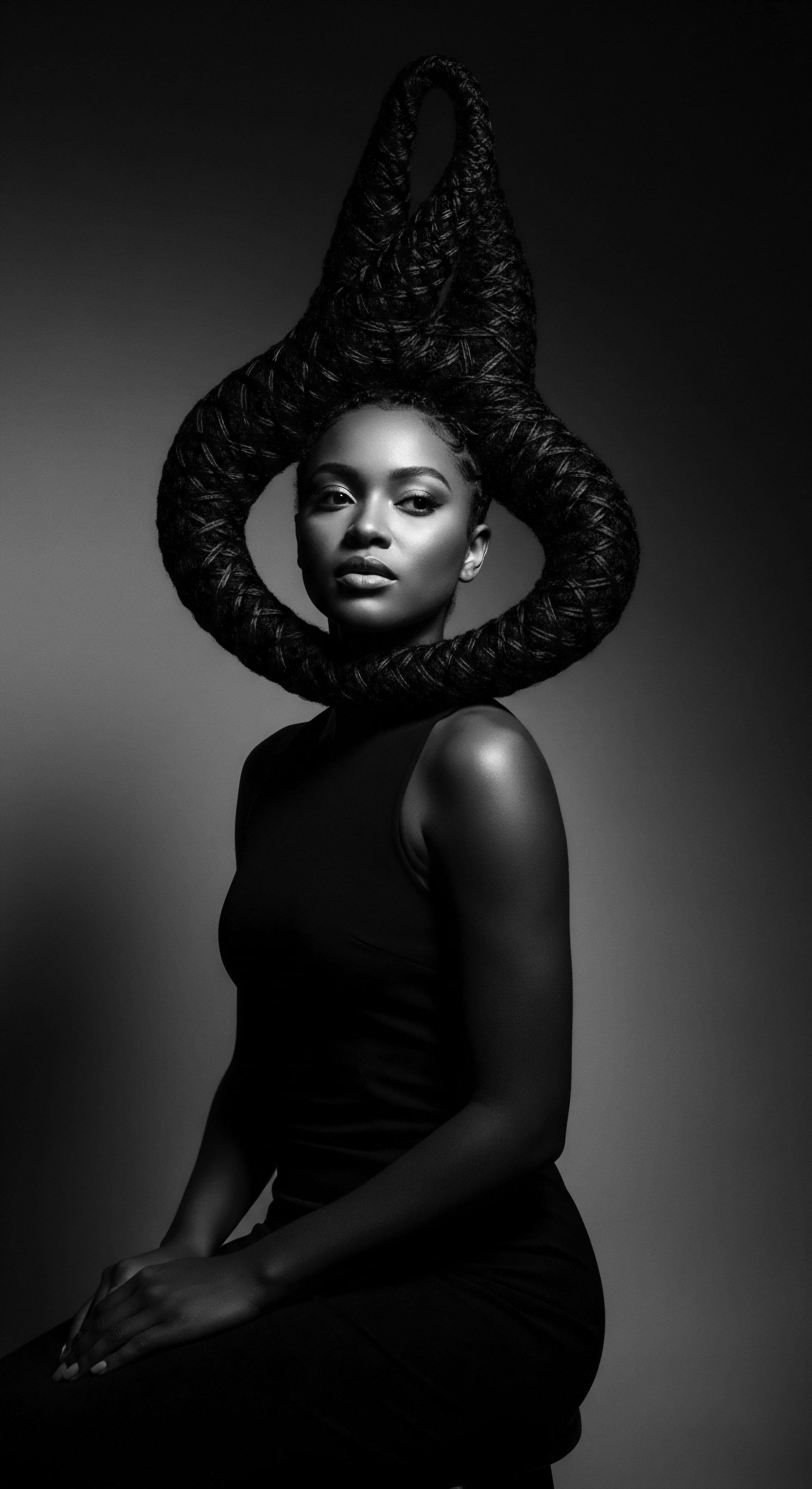
Protective Styling Traditions
Protective styles—such as braids, twists, and locs—have been central to textured hair care for millennia. These styles, which tuck away the delicate ends of the hair, shield them from manipulation and environmental damage, reducing breakage and encouraging length retention. Within this framework, headwraps have held a unique position. They added an extra layer of defense, guarding the carefully constructed styles from dust, friction, and the elements, thereby extending their life and effectiveness.
In many ancient African civilizations, these intricate braided hairstyles conveyed identity, status, and culture. The integration of headwraps with these styles was often seamless, a part of the holistic approach to hair care that valued both preservation and presentation. Accounts from formerly enslaved African Americans, documented through the Federal Writers Project, reveal that headwraps protected hair and scalp from sun and heat, while also keeping hair clean.
- Braids ❉ Ancient African communities used braids to convey status, ethnicity, and marital standing. Headwraps helped preserve these elaborate styles, sometimes taking days to complete.
- Twists ❉ Similar to braids, twists offered a protective styling method, and head coverings allowed these styles to remain neat and guarded from external forces.
- Locs ❉ In cultures like the Maasai, locs held ceremonial significance. Headwraps could offer spiritual and practical protection for these sacred styles.
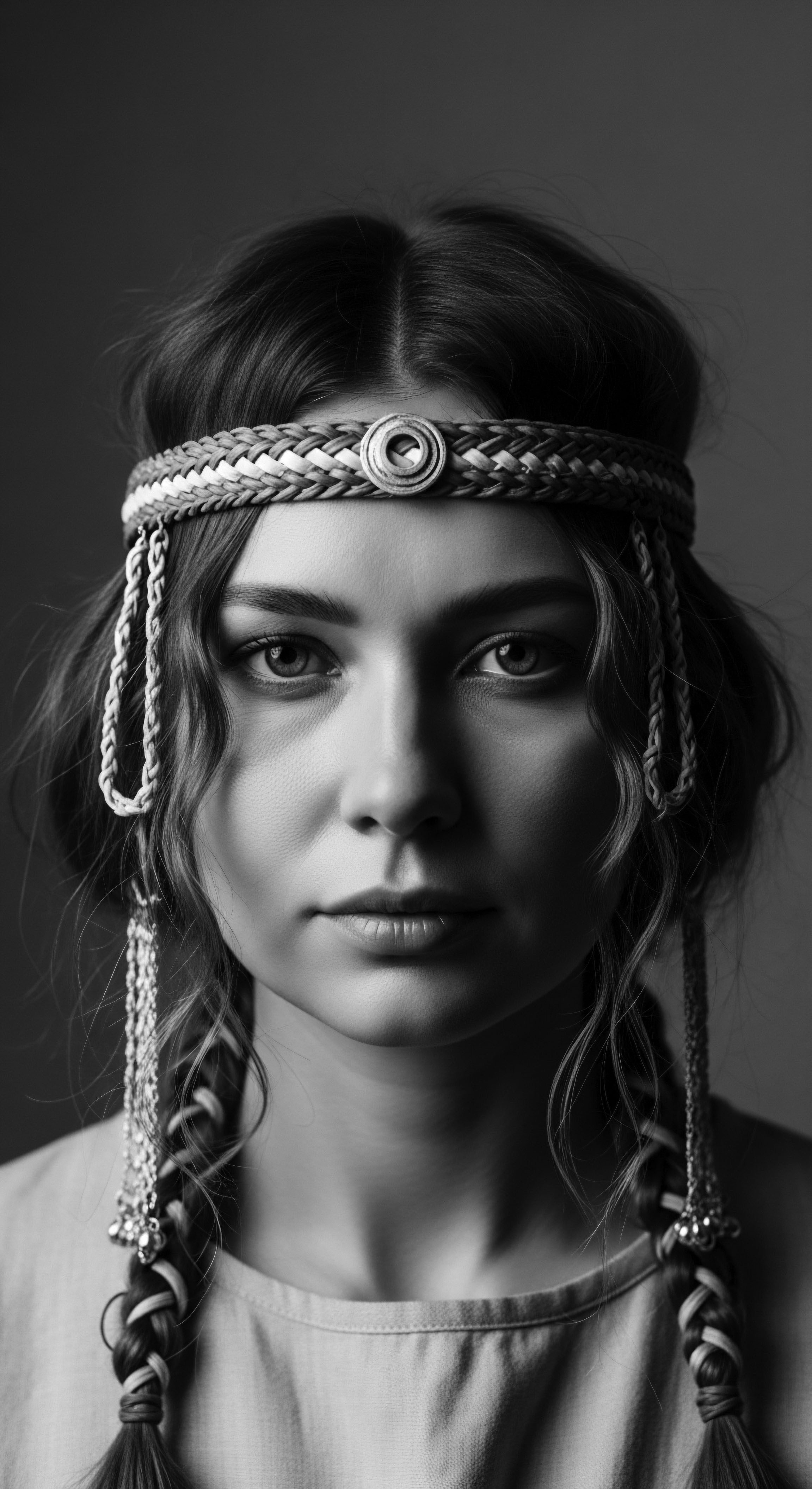
Natural Styling and Defining Hair Texture
The quest for natural hair definition and maintenance is a continuous thread throughout textured hair heritage. Headwraps have consistently aided in this endeavor, providing a gentle method to smooth, set, or maintain natural curl patterns without heat or excessive manipulation. After applying ancestral oils or water-based preparations, wrapping the hair could help to compress and align the curls, leading to more defined results once the wrap was removed.
This practice extends to contemporary styling, where bonnets and scarves are used to preserve curl definition overnight, a practical application rooted in historical wisdom. These methods underscore a deep understanding of hair’s natural inclinations and how coverings can work in concert with them to achieve desired results.
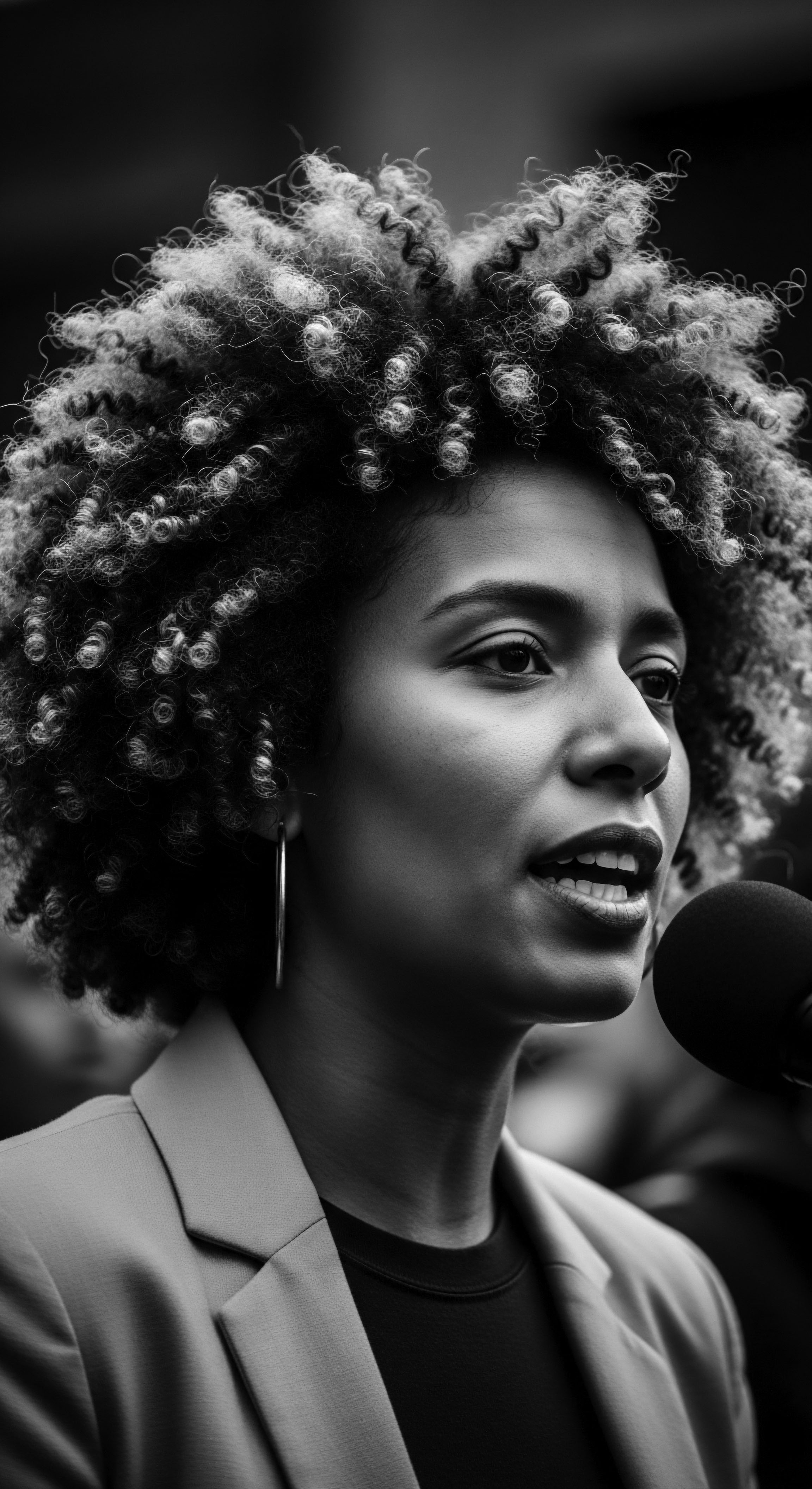
Historical Role of Headwraps with Hair Adornments
While wigs and hair extensions hold a history in many cultures, including ancient Egypt, where elaborate wigs were worn by royalty, headwraps often functioned as an alternative or complementary element. In contexts where hair augmentation was not accessible or desirable, headwraps offered a versatile means of personal expression and protection. They could conceal sparse hair, add perceived volume, or provide a canvas for vibrant textiles and intricate tying techniques that communicated status and artistry. This capacity to create striking visual statements, even under oppressive circumstances, speaks volumes about the creative spirit associated with head coverings.
For instance, despite laws forcing enslaved black women in Louisiana to wear head coverings as a marker of inferiority, they defiantly transformed them into beautiful, expressive statements, using fine fabrics and elaborate ties. This act of resistance through beauty highlights a powerful aspect of headwraps in historical styling.
The headwrap, far from a simple covering, has been a dynamic element in the stylistic heritage of textured hair, marrying practicality with profound expression.

Protection from Elements and Styling Practices
Traditional hair preparation methods, particularly those involving heat, often centered on natural elements. Contrast this with the sun’s scorching rays or persistent wind, both of which could cause significant damage to exposed textured hair. Headwraps emerged as a primary defense against such environmental stressors, minimizing direct exposure and preserving hair’s internal moisture. This protective utility stands in stark opposition to the damaging effects of harsh chemical treatments or excessive heat styling that became prevalent in later historical periods, often driven by Eurocentric beauty standards.
The headwrap, in its simplicity, offered a healthier, more sustainable path to hair preservation, aligning with ancestral practices that prioritized the hair’s natural vitality. This tradition of wrapping to avoid heat damage, or simply to allow air drying and style setting, persists today, a testament to its enduring efficacy.

The Hair Care Toolkit
Every era has its tools for hair care, and the historical toolkit for textured hair includes items passed down through generations. While combs, oils, and natural clays formed a fundamental part of these implements, the headwrap holds a place of special importance. It was not merely a decorative accessory but a working tool, essential for safeguarding hair during sleep, long journeys, or demanding labor. Its versatility meant it could be fashioned into different forms to suit various needs, from a simple tie to a voluminous drape.
This practical utility, coupled with its symbolic value, cements the headwrap’s place as an indispensable element in the ancestral and contemporary care of textured hair. The materials, often natural fibers, further speak to a harmony with the environment and a deep understanding of hair’s needs.

Relay
The journey of textured hair care extends beyond styling; it enters the sacred space of daily regimens, especially the quiet rituals of nighttime protection and the wisdom applied to address common hair challenges. Headwraps, in their evolution from simple coverings to specialized bonnets, stand as guardians in this realm, embodying ancestral knowledge and the enduring spirit of preservation. This legacy is not a static artifact; it is a living, breathing set of practices that continue to nourish and protect textured hair, relaying lessons from past generations into our present.

Ancestral Wisdom and Modern Regimens
Crafting a personalized hair regimen for textured hair is a practice rooted in ancestral wisdom, often validated by modern scientific understanding. Long before product lines and multi-step routines, communities relied on natural ingredients and consistent care, of which head coverings were a foundational part. The daily application of oils and butters, for instance, would have been complemented by the protective embrace of a headwrap, sealing in moisture and guarding against environmental stressors. This historical approach prioritized consistent attention to the hair’s delicate nature, emphasizing preventative measures over reactive solutions.
The global Black community has shown remarkable ingenuity in adapting hair care practices to various climates and lifestyles, all while preserving cultural heritage. This ongoing adaptation continues to inform contemporary regimens, proving that the effectiveness of headwraps in preserving hair health has remained constant across time.
| Principle Moisture Retention |
| Ancestral Practice Using shea butter, coconut oil, and other plant-based oils. |
| Headwrap's Role Seals in applied moisture; prevents evaporation due to exposure. |
| Principle Minimizing Friction |
| Ancestral Practice Gentle manipulation; protective styling (braids, twists). |
| Headwrap's Role Creates a smooth barrier against abrasive surfaces (e.g. rough bedding). |
| Principle Environmental Shield |
| Ancestral Practice Hair worn in contained styles (e.g. tight braids). |
| Headwrap's Role Guards against sun, wind, dust, and temperature fluctuations. |
| Principle Style Preservation |
| Ancestral Practice Elaborate, time-consuming styles. |
| Headwrap's Role Helps maintain the integrity and neatness of styles for longer periods. |
| Principle These principles highlight how headwraps supported ancestral hair care, protecting textured hair from damage while enhancing its well-being. |

The Nighttime Sanctuary
The transition from day to night, particularly for textured hair, requires dedicated attention to preservation. The nighttime sanctuary, where hair is protected from the friction and entanglement of sleep, has a deep historical connection to head coverings. Bonnets, often crafted from silk or satin, are modern iterations of the ancestral headwrap, specifically designed for sleep protection.
The logic behind this practice is simple yet profoundly effective ❉ by enveloping the hair in a smooth, low-friction fabric, moisture is retained, and breakage from tossing and turning is minimized. This practical application finds its roots in the widespread historical use of headwraps for sleeping, a tradition that predates modern beauty aisles.
The practice of wearing coverings during sleep is not solely a contemporary habit. Oral histories from formerly enslaved African Americans reveal mothers wrapping their hair every night, a testament to the longevity of this protective ritual. This continuous use of head coverings at night demonstrates a deep, intuitive understanding of textured hair’s needs, prioritizing its longevity and health. It is a powerful example of how practical solutions, refined over generations, became foundational to hair care.
From historical wraps to modern bonnets, covering textured hair at night stands as a timeless ritual of preservation.
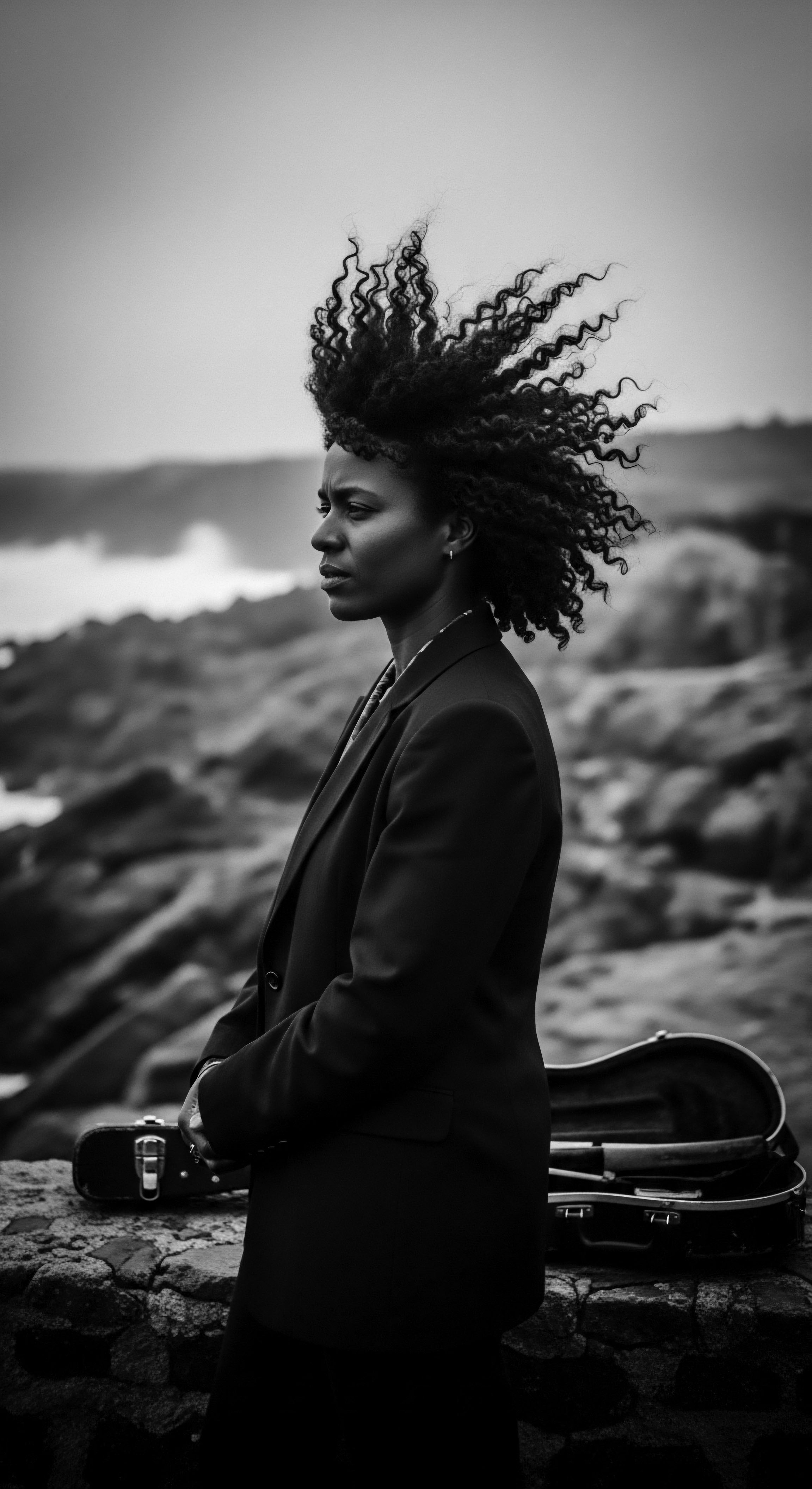
Ancestral Ingredients and Hair Needs
Traditional hair care often involved an intimate knowledge of local botanicals and natural substances. Ingredients such as Shea Butter, Coconut Oil, Aloe Vera, and various plant-derived oils were historically applied to nourish and protect hair. These substances addressed the inherent need for moisture in textured strands. Once applied, a headwrap would help to seal in these beneficial ingredients, allowing them to penetrate and condition the hair more effectively by reducing evaporation.
This layered approach—applying nourishing compounds and then covering—demonstrates a sophisticated ancestral understanding of hair science, allowing the hair to reap the full benefit of these natural remedies. The Himba people, for instance, apply a mixture of ground ochre, aromatic resin, and animal fat to their hair, a practice that would naturally benefit from being covered.

Addressing Hair Challenges with Heritage Wisdom
Textured hair, with its propensity for dryness and breakage, has historically faced specific challenges. Headwraps have played a quiet yet critical role in addressing these concerns, offering a simple, readily available solution. Beyond daily protection, they could serve as a stop-gap measure for “bad hair days,” or, more significantly, shield hair undergoing healing or transitioning between styles. For women experiencing hair damage or loss, headwraps offered a way to cover the head while promoting a sense of well-being during the healing process.
This adaptability speaks to the headwrap’s enduring utility, a testament to its practical function in problem-solving within textured hair care across generations. The resilience of hair care practices is evident in how traditional methods adapted using basic ingredients, with headwraps serving to prolong styles between washes.
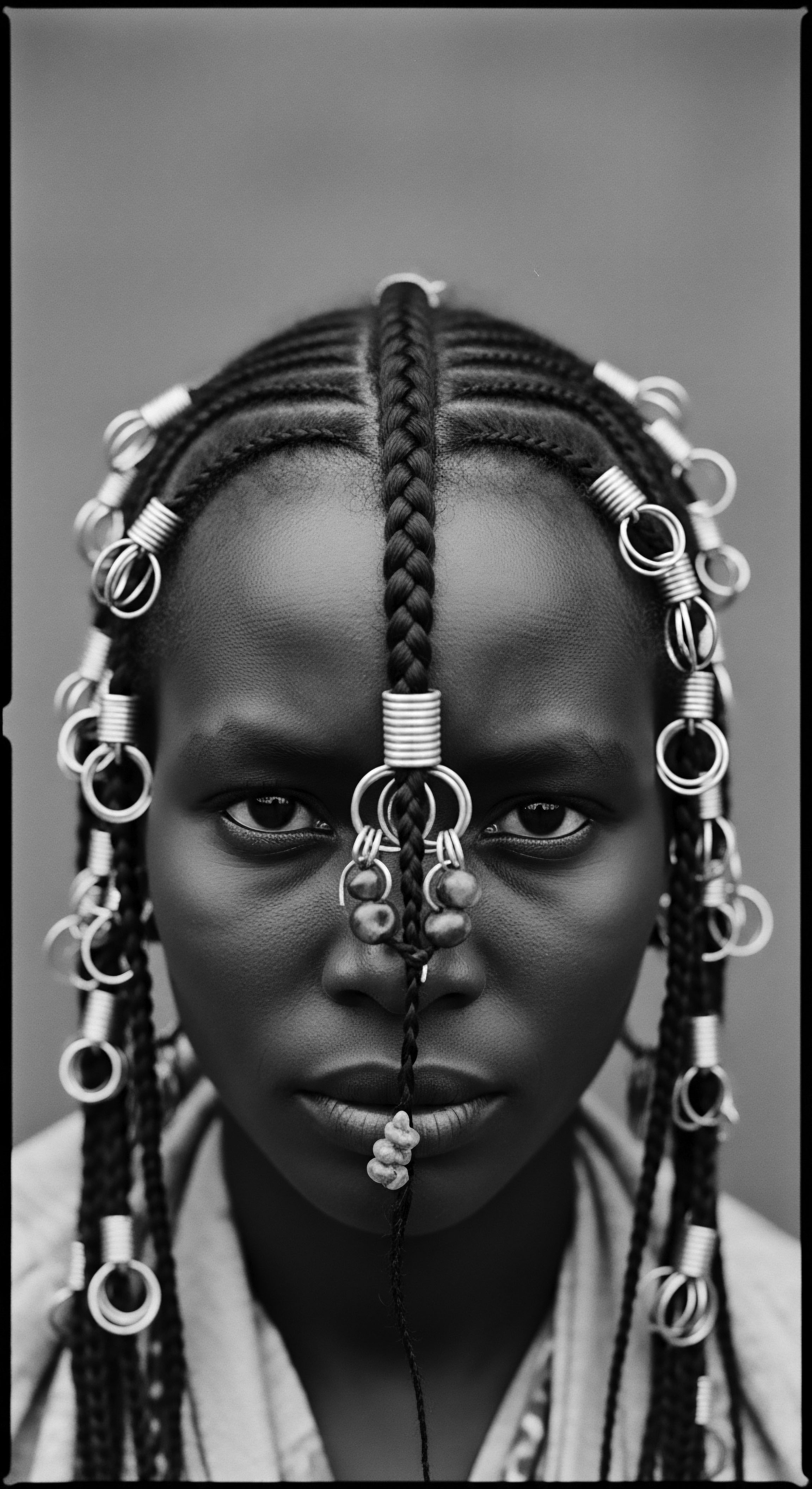
What are the Cultural Influences on Textured Hair Health?
The understanding of hair health extends beyond the physical; it is deeply intertwined with holistic well-being and ancestral philosophies. In many African cultures, hair held immense spiritual significance, acting as a medium for communication or a symbol of divine protection. The act of hair care was often communal, strengthening bonds and passing down wisdom. Headwraps, in this context, were not merely practical coverings but vessels for meaning, connecting the wearer to a lineage of care and cultural identity.
The Louisiana Tignon Laws of 1786 serve as a powerful historical example of this interplay between protection and identity. Enacted by Spanish Governor Esteban Rodríguez Miró, these laws mandated that free women of color in New Orleans cover their hair with a tignon, a headscarf, ostensibly to distinguish them from white women and to suppress their perceived “extravagance”. The intent was to impose social hierarchy and diminish their beauty and growing influence. However, these resilient women defied the law’s oppressive intent.
Instead of conforming to subservience, they transformed their tignons into vibrant displays of self-expression, using luxurious fabrics, elaborate tying methods, and adornments like feathers and jewels. This act of sartorial rebellion demonstrated how a tool of oppression was re-appropriated into a symbol of dignity, creativity, and steadfast resistance, serving as a form of cultural protection even as it protected their physical hair. This example underscores how the practice of covering hair became a powerful statement of cultural identity, asserting agency and preserving heritage in the face of attempts at erasure.
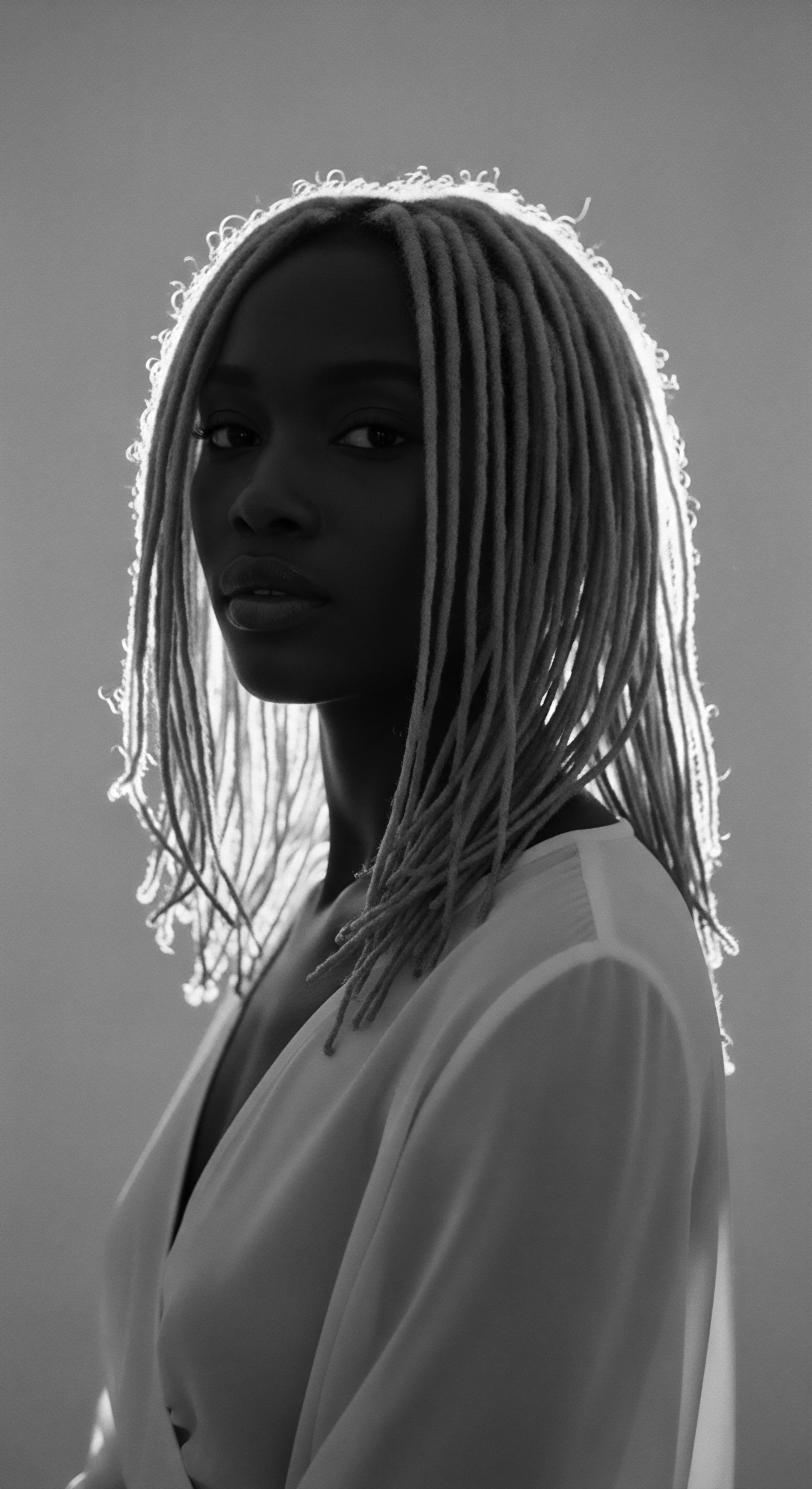
Relay
The story of textured hair care, its rituals, and its deep connection to headwraps is a profound exploration of human adaptation, artistry, and the unyielding spirit of cultural preservation. This historical connection, far from being a simple footnote, represents a complex interplay of biology, climate, social dynamics, and spiritual beliefs. The relay of this knowledge from generation to generation speaks to a living heritage, continuously evolving yet steadfast in its core purpose ❉ the protection and celebration of textured hair. This section delves into the deeper, often overlooked, facets of this connection, drawing from research and scholarship to reveal its true depth.

How does the Headwrap Act as a Biocultural Artifact?
The headwrap transcends its physical form, functioning as a true biocultural artifact within the context of textured hair. From a biological standpoint, its role in preventing moisture loss and minimizing mechanical damage is well-documented. Textured hair, characterized by its helical shape and raised cuticle layers, is inherently more susceptible to dryness and breakage compared to straighter hair types.
The wrap provides a physical barrier, sealing in moisture from natural oils and external applications, and shielding strands from abrasive surfaces like coarse bedding or harsh environmental elements. This biophysical protection directly contributes to the hair’s overall health and longevity.
Yet, the headwrap’s significance extends far beyond its biological utility. Culturally, it has served as a powerful signifier of identity, status, and resistance across the African diaspora. In pre-colonial Africa, hairstyles and their coverings communicated intricate social codes—marital status, age, wealth, and tribal affiliation. As people of African descent navigated the brutal realities of the transatlantic slave trade and subsequent periods of oppression, the headwrap acquired new, profound meanings.
It became a tool of dehumanization, enforced by laws such as the Tignon Laws in Louisiana, which aimed to mark free women of color as inferior. However, as historical accounts and scholarly work by Helen Bradley Griebel attest, these women defiantly re-appropriated the tignon. They transformed it into an ornate expression of beauty, using costly fabrics and elaborate tying techniques, turning a symbol of subjugation into one of agency and communal identity. This act of re-appropriation is a powerful example of how enslaved and free Black women used sartorial means to resist loss of self-definition and assert their dignity. This historical resistance, woven into the fabric of the headwrap’s use, illustrates its deep biocultural resonance—a physical protector that also carries a rich, defiant spirit.

Ancestral Ingenuity and Material Science
The selection of materials for headwraps throughout history speaks to an ancestral understanding of textile properties and their impact on hair. Long before synthetic fibers, natural materials like cotton, linen, and silk were prevalent. While cotton was accessible, its absorbent nature could strip hair of moisture. The preference for smoother, less absorbent materials, particularly for nighttime coverings, likely emerged from lived experience.
The smooth surface of silk, for instance, reduces friction, preventing tangles and breakage, and helps retain hair’s natural oils. This scientific understanding, now validated by modern hair science, was intuitively applied by ancestors who sought to preserve delicate hair strands through practical means. The practice of using wraps to prolong styles between washes also speaks to an awareness of how materials could maintain hair integrity, a crucial aspect given the time and effort involved in creating elaborate hairstyles.
Scholarship on the history of African hair traditions points to this deep material wisdom. The use of specific cloths, sometimes adorned with cowrie shells or beads, did not only serve aesthetic purposes but also contributed to the overall health and protection of the hair beneath. The functionality of these coverings, often handmade and imbued with cultural significance, represents a sophisticated system of hair care that integrated local resources with an intimate knowledge of hair biology.
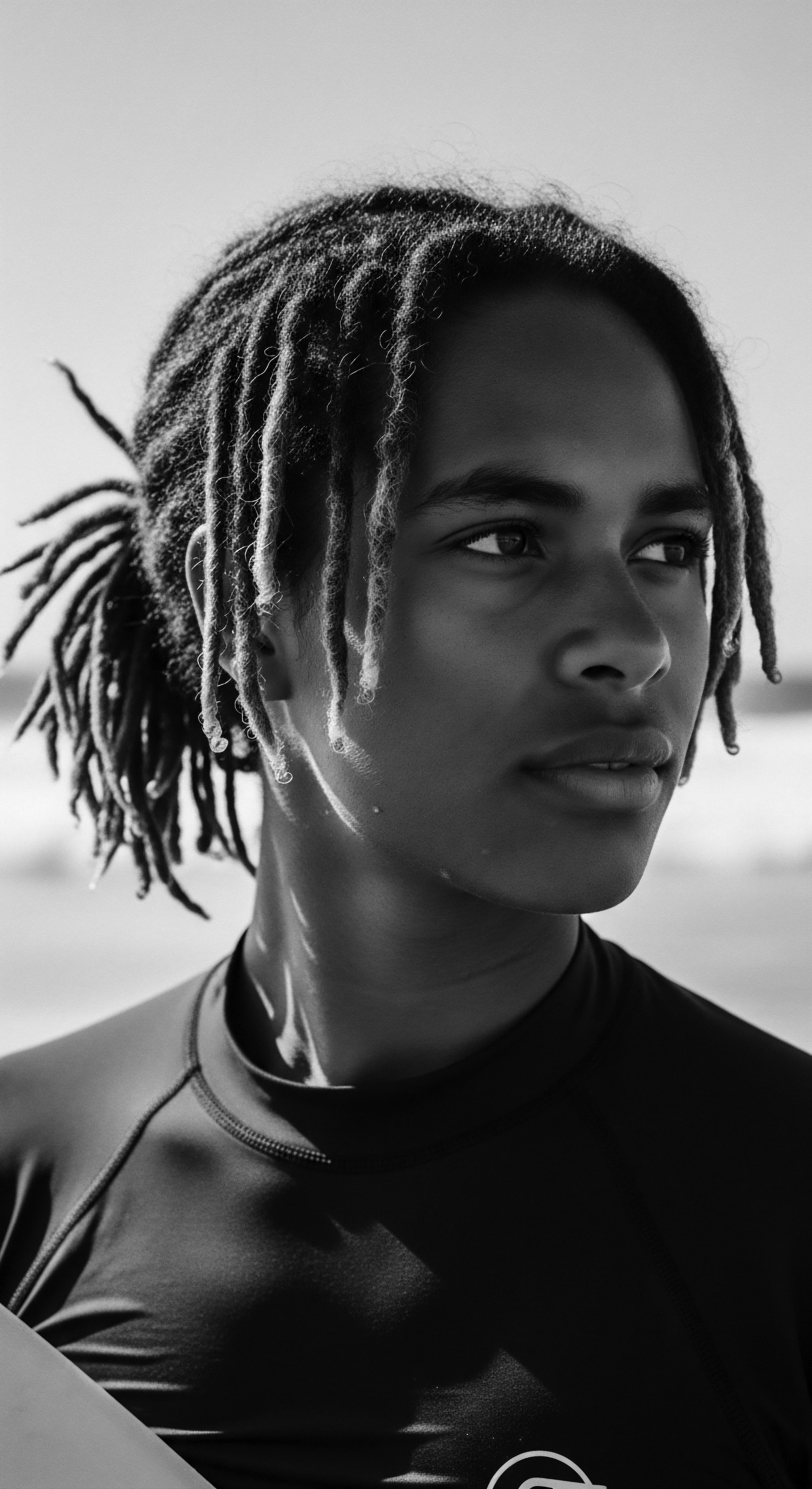
The Headwrap’s Enduring Legacy as a Heritage Marker
The headwrap’s journey through history, from a practical covering to a potent symbol of defiance, solidifies its position as an enduring marker of textured hair heritage. Its resilience mirrors the resilience of the communities that wore them, consistently adapting its meaning and function in the face of adversity. This continuous thread of utility and symbolism, from pre-colonial adornment to a badge of resistance during slavery and a statement of cultural pride today, makes the headwrap a living archive of Black and mixed-race experiences.
The ongoing popularity of headwraps and their contemporary iterations, like silk bonnets and durags, underscores their continued relevance. They represent a conscious connection to ancestral practices, a reclamation of cultural identity, and a practical tool for modern hair care. The choice to wear a headwrap today is often a multifaceted decision, reflecting personal style, cultural pride, and a continued understanding of its protective qualities for textured hair.
This complex legacy affirms the headwrap as a powerful emblem of a heritage that values both the physical well-being of hair and its profound cultural meaning. The headwrap, in essence, is a testament to the fact that true beauty is often found in the preservation of self, culture, and ancestral wisdom.
The headwrap is a testament to persistent cultural memory, safeguarding strands and identity across generations.
The scholarship of Helen Bradley Griebel (1994) in “The African American Woman’s Headwrap ❉ Unwinding the Symbols” details the dual meaning of the headwrap. During slavery, white enslavers imposed its wear as a badge of enslavement, yet enslaved and free Black women saw it as a “helmet of courage,” representing communal identity and resistance . This specific example powerfully illustrates the dual nature of headwraps as a tool for physical hair protection and a profound symbol of cultural and ancestral resilience.

Reflection
The journey through the historical connection between headwraps and textured hair protection reveals more than a simple accessory; it uncovers a profound meditation on the Soul of a Strand . Each coil, each kink, each wave holds within its very structure the echoes of ancestral wisdom, resilience, and unyielding beauty. Headwraps stand as silent witnesses to this unfolding story, a testament to humanity’s capacity to adapt, to innovate, and to claim selfhood even in the most trying circumstances. They are not merely fabric; they are a living, breathing archive, recording centuries of environmental adaptations, cultural expressions, and acts of profound self-preservation.
To consider the headwrap is to honor the ingenuity of those who came before us, who understood intuitively the unique needs of textured hair long before science offered its explanations. It is to recognize the power of adornment as a shield, a statement, and a connection across time. This continuous thread, from ancient African villages to the bustling streets of contemporary cities, reminds us that the care of textured hair is, at its heart, an act of tending to a precious legacy.
It connects us to a lineage of strength and creativity, a rich inheritance that continues to shape our understanding of beauty, wellness, and belonging. In every fold and every knot, the headwrap whispers tales of heritage, reminding us that the past is not merely a memory, but a vibrant, living presence.
References
- Byrd, Ayana D. and Tharps, Lori L. (2014). Hair Story ❉ Untangling the Roots of Black Hair in America. St. Martin’s Press.
- Chimbiri, K. N. (2022). Crowning Glory ❉ A History of African Hair Tradition. New Beacon Books.
- Dabiri, Emma. (2020). Twisted ❉ The Tangled History of Black Hair Culture. Harper Perennial.
- Griebel, Helen Bradley. (1994). The African American Woman’s Headwrap ❉ Unwinding the Symbols. Art, Design, and Visual Thinking.
- Kynard, Carmen. (2013). Wrapping Our Heads ❉ Archiving Black Women’s Style Politics. Education, Liberation & Black Radical Traditions for the 21st Century.
- Rosado, Sybille. (2003). African Diasporic Hair ❉ A Grammar of Adornment. University of California Press.
- Thompson, Tiffany M. (2009). Afro-Decolonial Hair Politics ❉ Resistance and Subversion in the Black Female Body. University of Massachusetts Amherst.
- Walker, A’Lelia Bundles. (2001). On Her Own Ground ❉ The Life and Times of Madam C. J. Walker. Scribner.
